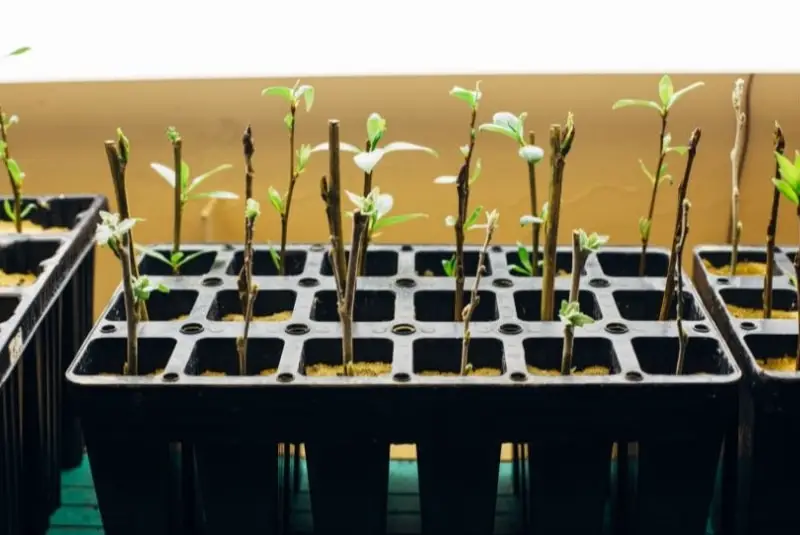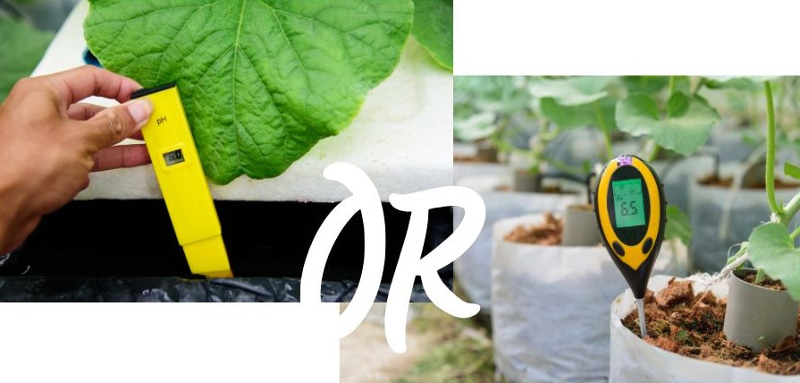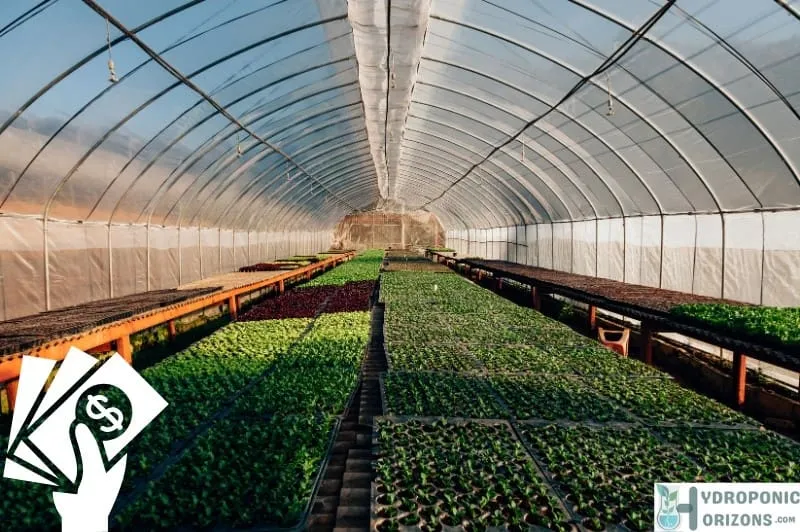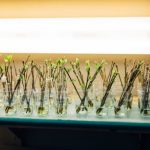Hydroponic cloning is an incredible technique that allows you to transfer the favorable genes of a mother plant into a clone, giving life to a new plant with the same genetic makeup. As a plant breeder, farmer, or home gardener, this method offers you an excellent opportunity to carry on the qualities of a healthy plant that has proven successful. In comparison to traditional gardening, cloning occurs much faster in hydroponic systems, making the process highly efficient.

Before you get started, it is essential to prepare clean tools for the cloning process. Ensuring cleanliness helps avoid contaminating your new plant with any pathogens or bacteria. You will also need a designated environment for your clones, which could be a specialized cloner or simply a separate space in your hydroponic grow tent. By following the right steps in our guide on how to clone a plant for hydroponics, your plant clones will flourish, providing you with the opportunity to maintain a continuous supply of your favorite plants in your hydroponic garden.
Choosing A Healthy Mother Plant
When starting the cloning process for a hydroponic system, it’s vital to choose a healthy mother plant. A mother plant with strong genetics will provide you with the best chance for success in producing strong, resilient clones. In this section, we will discuss some key factors to consider when selecting your donor plant.
First and foremost, you should thoroughly evaluate the genetic makeup of the potential mother plant. Look for a plant that has a history of vigorous growth, resistance to diseases, and high yields. This will ensure that your clones inherit these desirable traits from their parent, thus improving their chances of success in your hydroponic system.
Next, observe the overall health and condition of the donor plant. It’s vital to select one that is free from pests or diseases, as these can easily be transmitted to your clones. Make sure the plant has strong, healthy roots and sturdy stems, as these are essential for producing robust clones.
Here are some characteristics to look for in a healthy mother plant:
- Consistent, deep green foliage
- Strong, thick stems
- No visible signs of pests, diseases, or nutrient deficiencies
- Vigorous growth with plenty of new shoots and leaves
In order to maintain the health of your selected mother plant throughout the cloning process, ensure that it receives proper care and attention. This includes maintaining clean tools and environments. Additionally, employ proper pruning techniques to continually produce healthy clones and prevent overcrowding in the mother plant.
By carefully selecting a donor plant with strong genetic makeup and ensuring that you provide it with the necessary care, you can successfully produce healthy clones for your hydroponic system. Remember to be patient and persistent in your efforts, as it may take practice to perfect your cloning techniques.
Plant Cloning Preparation

Selecting The Right Tools
When preparing to clone a plant for hydroponics, it’s essential to gather the appropriate tools. First, make sure your tools are clean to avoid contamination. A clean pair of scissors or a scalpel is ideal for taking plant cuttings. Additionally, consider using a cloning gel or root enhancer to support the growth of new roots.
Preparing The Growing Medium
The growing medium plays a crucial role in the success of your plant cloning process. Choose a medium that promotes root growth and retains moisture while allowing for proper aeration. Some popular options for hydroponic cloning include:
- Rockwool: A popular option for hydroponic growing, Rockwool is made from spun rock fibers and provides excellent moisture retention and air flow for root development.
- Compost: Although typically used in traditional gardening, you can also use compost in hydroponics by mixing it with other mediums like coco coir, perlite, or vermiculite.
- Peat: Known for its excellent water retention, peat moss is an organic soil amendment that can be mixed with other mediums like coco coir, perlite, or vermiculite to create a well-balanced hydroponic growing medium.
- Coco coir: Derived from coconut husks, coco coir is an eco-friendly and renewable resource that retains water well and provides adequate aeration for root growth.
- Perlite: A lightweight, porous volcanic rock material, perlite can be mixed with other growing mediums to provide increased aeration and drainage.
- Vermiculite: A natural mineral similar to mica, vermiculite expands when heated and can hold more water than perlite, making it an ideal component for hydroponic growing mediums.
To prepare the growing medium, mix your chosen components, ensuring that it is moist but not overly saturated. Your plant clones will thrive in an environment where they can develop strong roots while accessing the necessary nutrients and oxygen.
Cutting And Preparing The Clone
Taking A Cutting
When cloning a plant for hydroponics, start by selecting a healthy and strong mother plant. Locate a branch in the lower part of the plant, as these tend to have a stronger concentration of growth hormones. Carefully cut the branch at a 45-degree angle to increase the surface area for rooting. Make sure the cutting has at least two nodes; these are the points where leaves and branches grow from the stem.
Trimming And Cleaning The Cutting
Once you have taken the cutting, it’s essential to trim and clean it properly. Remove any large leaves close to the bottom of the stem, as these can hinder root development. Additionally, trimming larger leaves on the cutting will reduce transpiration, helping the cutting conserve energy while it develops new roots.
To give the stem enough space for rooting, make a clean cut just below the node. Ensure that the final cut is made at a 45-degree angle, as mentioned before. Cleanliness is crucial during this step, so make sure your tools and working environment are sterile to prevent contamination and disease.
Applying Rooting Hormone
After trimming and cleaning the cutting, it’s time to apply a rooting hormone. Rooting hormones can come in gel, liquid, or powder form, so choose the one that best suits your needs. Gently dip or sprinkle the freshly cut end of the stem into or with the rooting hormone, ensuring the node area is well covered. We have a detailed guide about how to use rooting powder, gel or liquid for hydroponic propagation as well as a list of the best rooting hormone for propagation of hydroponic plants.
This hormone application will stimulate root growth and help the cutting take root faster in your hydroponic system. After you have applied the rooting hormone, place the cutting into a growing medium or root cube, and the plant will start developing its own roots.
Remember to regularly check the humidity and temperature of your cloning environment, as these factors play a significant role in the success of your plant clones.
Related: A very similar method of propagation involves using aeroponics. If this interests you, we have a ton of aeroponic cloner tips for you to follow! We can also alert you to common aeroponic cloning issues you may encounter.
Rooting And Nurturing The Clone

Placing The Clone In The Growing Medium
After taking a healthy cutting from your chosen plant, the next step in the hydroponic cloning process is to place the clone into its growing medium. It’s a good idea to use a rooting hormone to encourage faster root growth. Simply dip the dampened, cut end of the stem into the rooting gel or rooting powder, ensuring the powder adheres to the stem.
Next, carefully insert the clone into the hydroponic medium, whether it’s rockwool cubes, coco coir, or another suitable option. Make sure the cutting is properly secured in the medium.
Providing Optimal Conditions
Now, let’s focus on providing the right conditions for your clone to thrive:
- Light – Your clone will need adequate light for proper growth. For the first few days, about 18 to 24 hours of light is ideal, preferably from a mild, cool-white LED or fluorescent source.
- Temperature – Maintain a consistent temperature of 75° to 82°F. A hydroponic cloning environment is conducive to a slightly higher temperature to help the plant grow faster.
- Humidity – Keep humidity levels high with a humidity dome. Aim for 70-80% humidity to ensure that your clone does not lose too much water through its leaves.
- Moisture – Check your growing medium’s moisture levels regularly. The medium should remain constantly moist but not saturated or soggy.
- Nutrient Solution – Provide a mild nutrient solution as soon as roots appear. This will help the young roots absorb vital nutrients, fostering healthy growth.
- CO₂ Levels – Make sure your clones have access to fresh air and adequate CO₂ supplies. This will help them process energy and increase photosynthesis rates.
By ensuring these conditions are met, your hydroponic clone will be well on its way to developing into a strong, healthy new plant. Just remember to monitor your plant’s progress, adjusting conditions as necessary, and not to overcrowd your hydroponic system as it can limit air circulation and reduce light exposure. You can build a cheap DIY hydroponic cloning system and monitor temperature, humidity and light yourself or you can take the hassle out and get an inexpensive but reliable cloning machine like the OxyClone OX20SYS.
OxyClone OX20SYS 20 Site, Compact Recirculating Cloning Propagation System, Heavy Yields
- Create 20 new plants at once with maximum oxygenation.
- Grow plants throughout the year with this system.
- Venturi valve, submersible pump, and air diffuser for aeration; BPA-free pumps.
- Kit Includes: 20-site reservoir, lid, oxyCERTS, submersible and air pump, tubing, and air stone.
- 1.75-gallon water capacity; Dimensions: 13.8 x 10.8 x 6.3 in; Weight: 5.3 lbs.
Transplanting The Clone
Monitoring Clone Growth
As your plant clone starts to grow in its hydroponic environment, monitor its development closely. Pay attention to the root growth, as well-defined roots indicate that the clone is ready for transplanting to your hydroponic system. Usually, this should take anywhere between a week to two weeks. Observe the growth stages of your clone, specifically the vegetative stage, as this is crucial for its overall development and success.
Preparing For Transplant
Before transplanting your clone, ensure that you’ve chosen the best container for its growth. This will largely depend on the type of plant you’re growing, such as a tomato plant. Ideally, you should select a container with proper drainage and enough space for the roots to expand. Furthermore, consider the following tips when preparing for the transplant:
- Choose a clean environment: Make sure that the area where you plan to transplant your clone is clean and free from contamination.
- Get your nutrients ready: Have your hydroponic cloning nutrients prepared and tested for correct pH and TDS (Total Dissolved Solids) levels to provide an optimal environment for your clone.
- Acclimate your clone: Gradually introduce your clone to its new environment by easing it out of its humidity dome over the course of a few days. This will help prevent any shock from sudden changes in humidity levels.
Once you’ve carefully monitored the growth of your clone and prepared for the transplant, go ahead and place your clone into its new hydroponic container. Make sure to give it enough space and light to continue growing strong and healthy. Remember to maintain a close eye on your cloned plant as it establishes itself in the hydroponic system, adjusting the nutrient solution and other conditions as needed to ensure its success.








